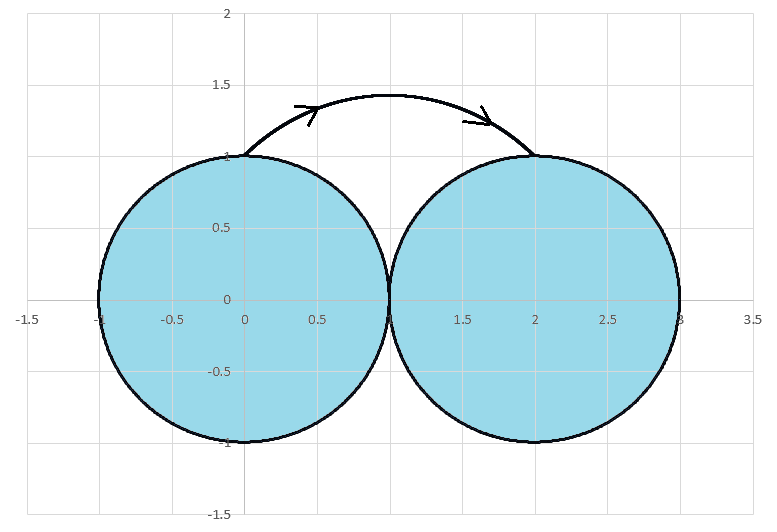From One North Pole to the Other
There are two identical uniform spherical planets of radius . The first has its center at the origin of the coordinate system. The second has its center at . The planets are touching.
A projectile is launched from the "North Pole" of the first planet at with its initial velocity pointed in the direction of the vector .
Let the escape speed relative to the planet's surface be . Note that here, the escape speed is for a single planet in isolation (following the typical convention).
With the given launch vector, let be the minimum launch speed for the projectile to reach the "North Pole" of the second planet at . The two speeds are related as follows:
Determine the value of

The answer is 0.813.
This section requires Javascript.
You are seeing this because something didn't load right. We suggest you, (a) try
refreshing the page, (b) enabling javascript if it is disabled on your browser and,
finally, (c)
loading the
non-javascript version of this page
. We're sorry about the hassle.
We are being asked to solve the paired differential equations x ¨ y ¨ = − g R 2 [ ( x 2 + y 2 ) 2 3 x + ( ( x − 2 R ) 2 + y 2 ) 2 3 x − 2 R ] = − g R 2 [ ( x 2 + y 2 ) 2 3 y + ( ( x − 2 R ) 2 + y 2 ) 2 3 y ] together with the initial conditions x ( 0 ) = 0 , y ( 0 ) = R , x ˙ ( 0 ) = y ˙ ( 0 ) = 2 α v e , where, of course, v e = 2 g R .
We can render these equations dimensionless by changing variables so that x = R X , y = R Y , t = g R T , and the equations become x ′ ′ y ′ ′ = − [ ( X 2 + Y 2 ) 2 3 X + ( ( X − 2 ) 2 + Y 2 ) 2 3 X − 2 ] = − [ ( X 2 + Y 2 ) 2 3 Y + ( ( X − 2 ) 2 + Y 2 ) 2 3 Y ] with the initial conditions X ( 0 ) = 0 , Y ( 0 ) = 1 , X ′ ( 0 ) = Y ′ ( 0 ) = α . Here a dash represents differentiation with respect to T .
Given a particular value of α , we want to find the first value of T for which X ( T ) = 2 , and determine the corresponding value of Y ( T ) . We need to find the value of α such that Y ( T ) = 1 when first X ( T ) = 2 . Searching numerically in the range 0 . 7 < α < 1 , we find that the required value of α is 0 . 8 1 3 1 3 0 5